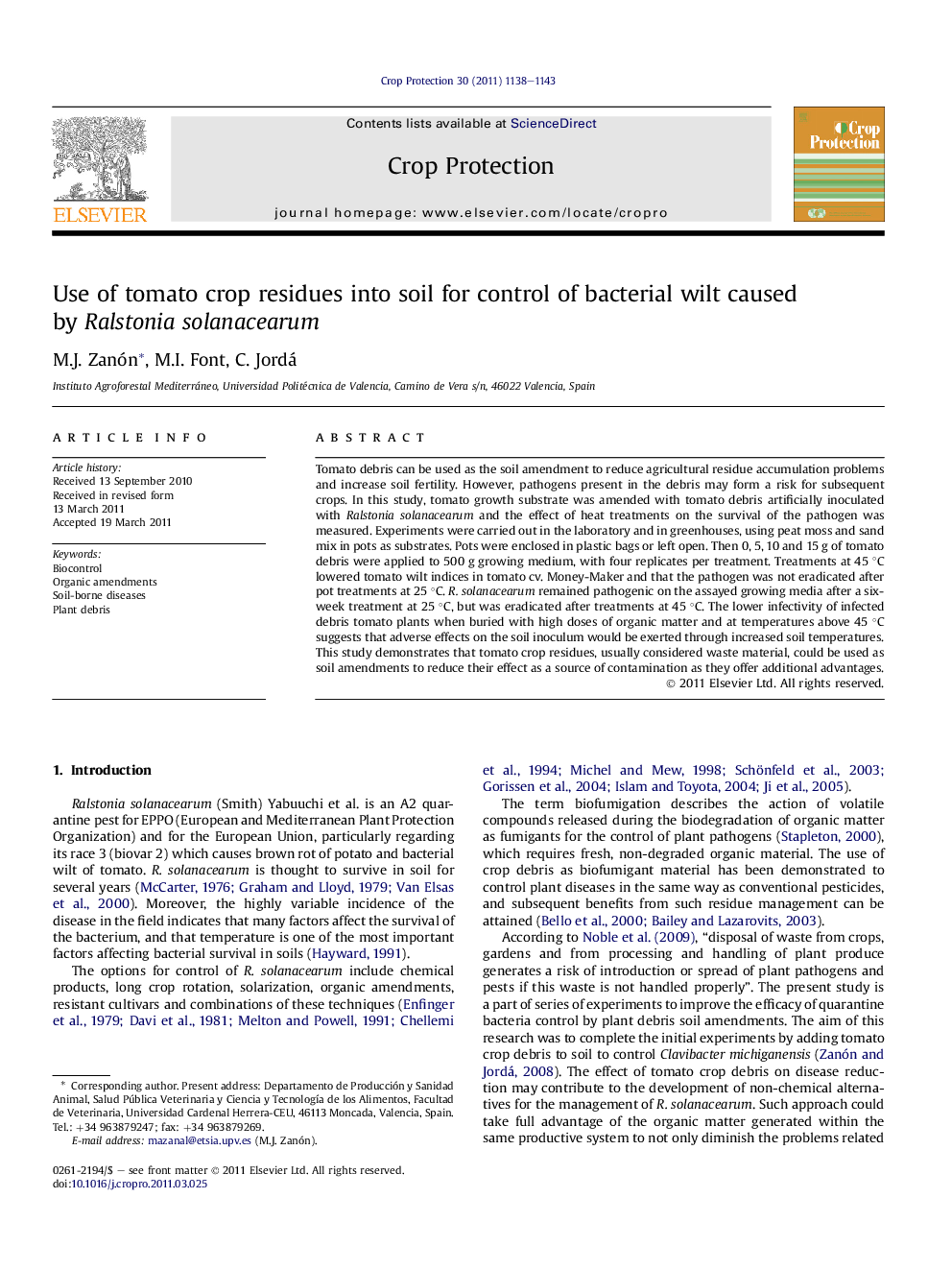| کد مقاله | کد نشریه | سال انتشار | مقاله انگلیسی | نسخه تمام متن |
|---|---|---|---|---|
| 4506617 | 1321322 | 2011 | 6 صفحه PDF | دانلود رایگان |

Tomato debris can be used as the soil amendment to reduce agricultural residue accumulation problems and increase soil fertility. However, pathogens present in the debris may form a risk for subsequent crops. In this study, tomato growth substrate was amended with tomato debris artificially inoculated with Ralstonia solanacearum and the effect of heat treatments on the survival of the pathogen was measured. Experiments were carried out in the laboratory and in greenhouses, using peat moss and sand mix in pots as substrates. Pots were enclosed in plastic bags or left open. Then 0, 5, 10 and 15 g of tomato debris were applied to 500 g growing medium, with four replicates per treatment. Treatments at 45 °C lowered tomato wilt indices in tomato cv. Money-Maker and that the pathogen was not eradicated after pot treatments at 25 °C. R. solanacearum remained pathogenic on the assayed growing media after a six-week treatment at 25 °C, but was eradicated after treatments at 45 °C. The lower infectivity of infected debris tomato plants when buried with high doses of organic matter and at temperatures above 45 °C suggests that adverse effects on the soil inoculum would be exerted through increased soil temperatures. This study demonstrates that tomato crop residues, usually considered waste material, could be used as soil amendments to reduce their effect as a source of contamination as they offer additional advantages.
Figure optionsDownload as PowerPoint slideHighlights
► Treatments at 45 °C lowered tomato wilt indices in tomato cv. Money-Maker.
► Ralstonia solanacearum was not eradicated after pots treatments at 25 °C.
► The control of disease incidence shows the heat sensitivity of R. solanacearum.
► Negative pathogenicity reactions were achieved with bacterial suspensions.
► Crop residues could be used as soil amendments to reduce their environmental effect.
Journal: Crop Protection - Volume 30, Issue 9, September 2011, Pages 1138–1143